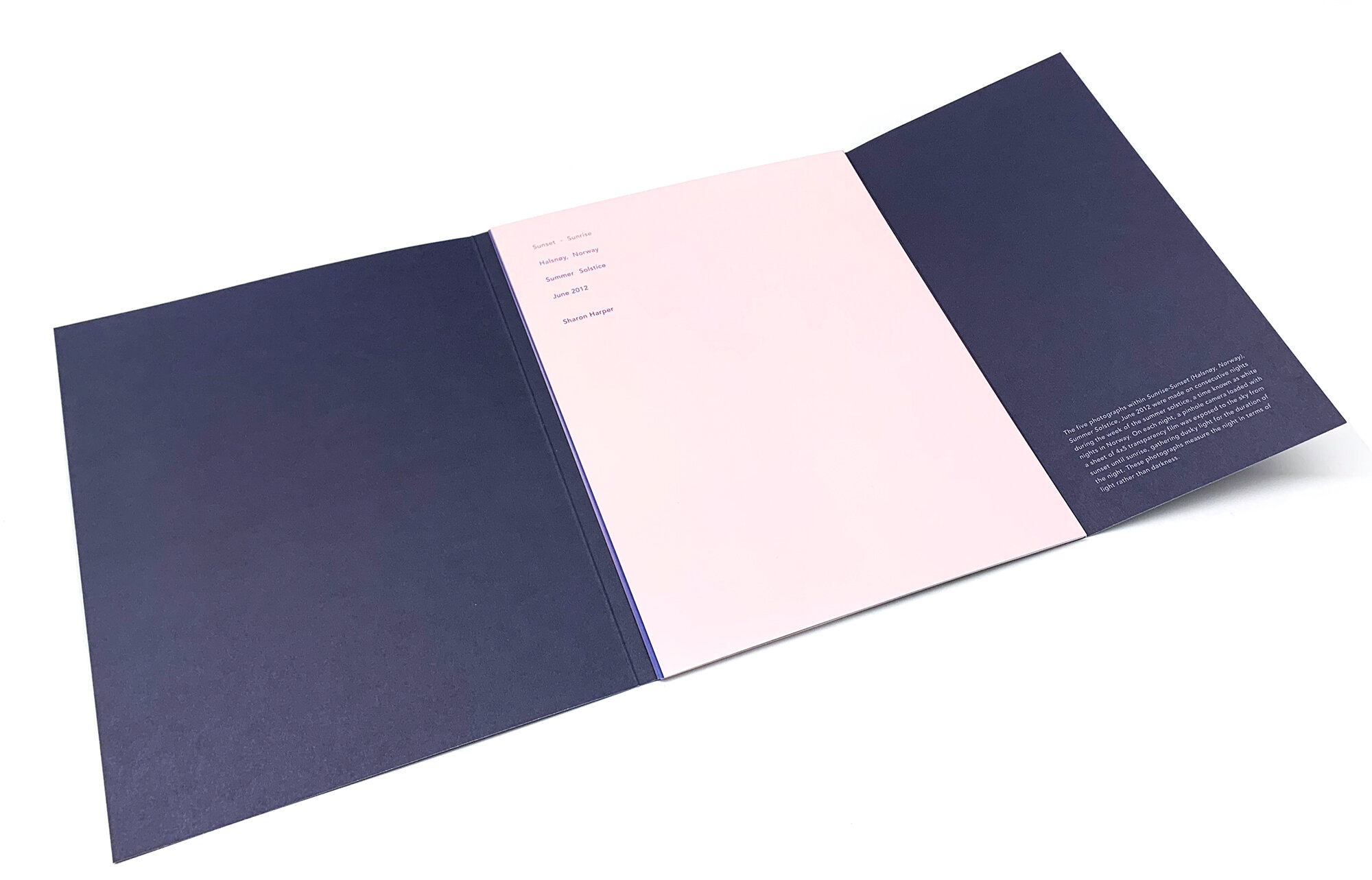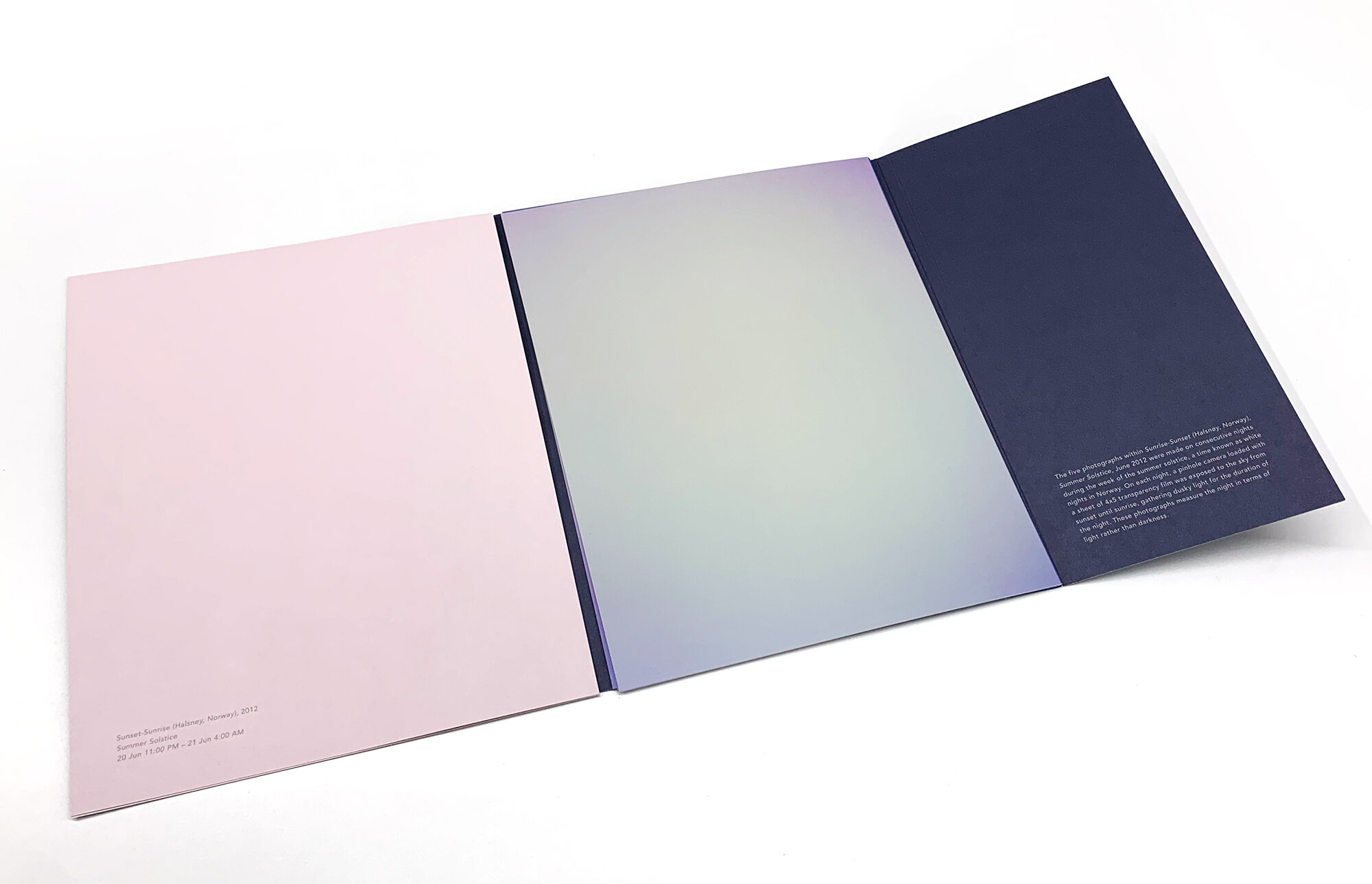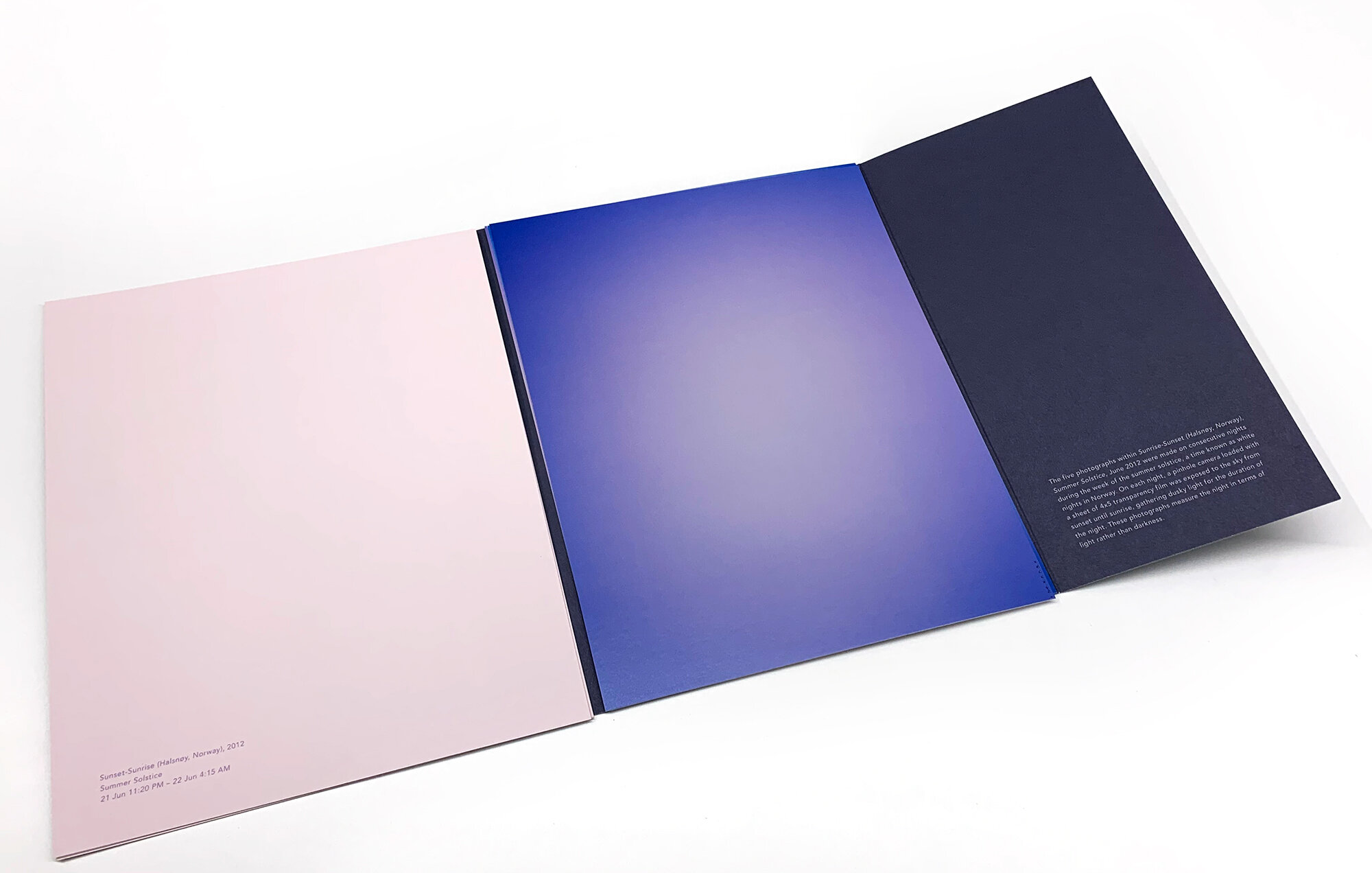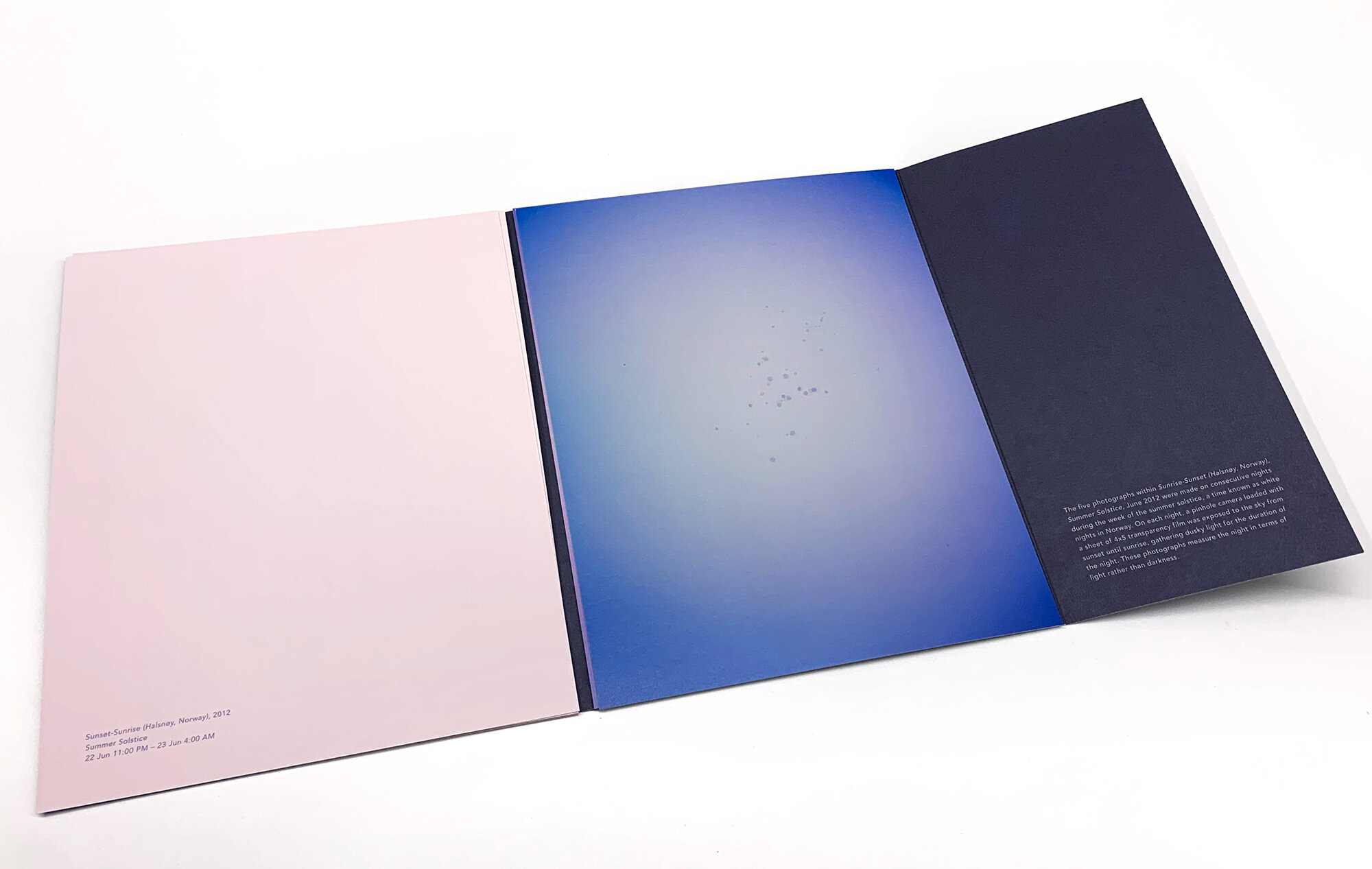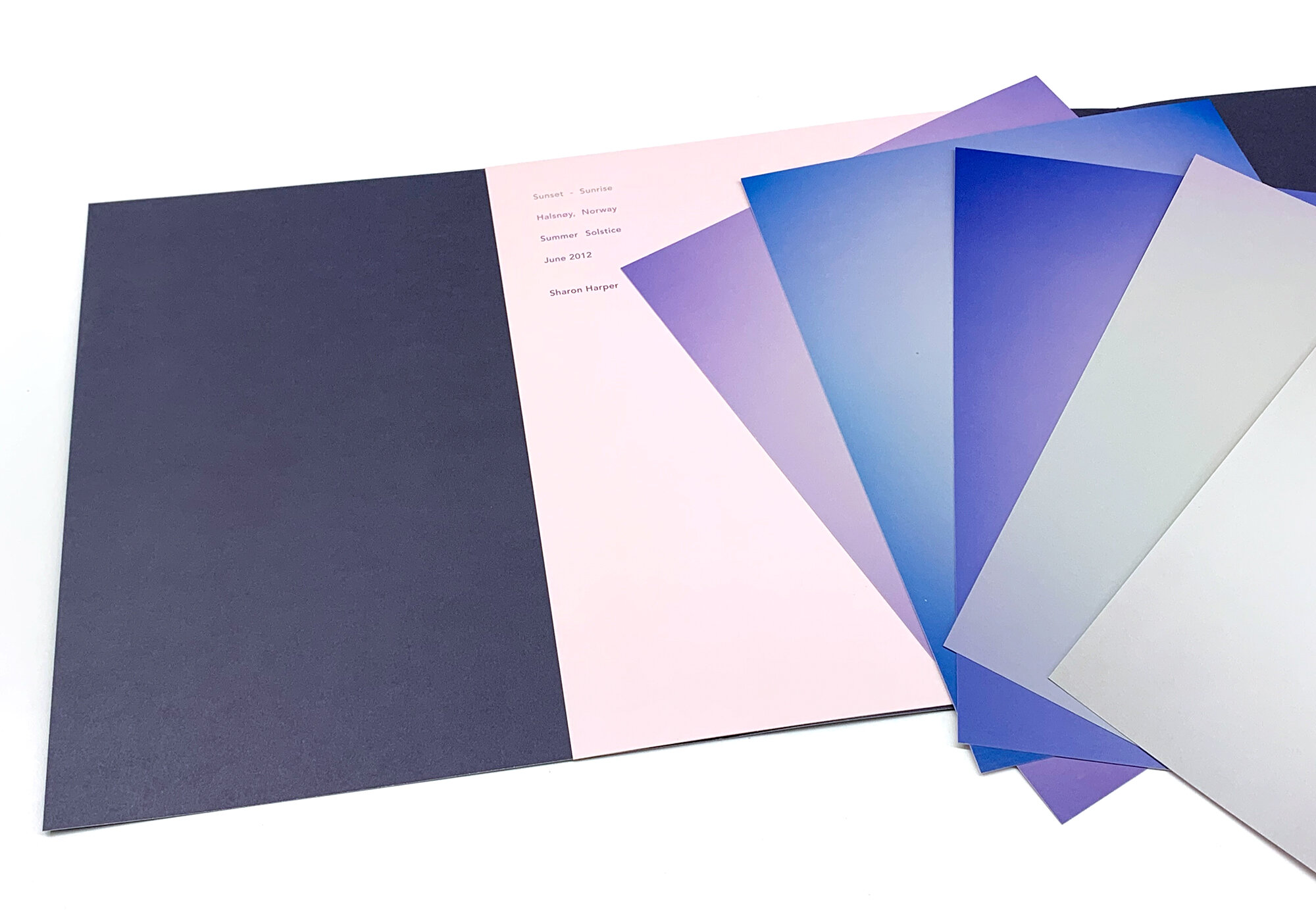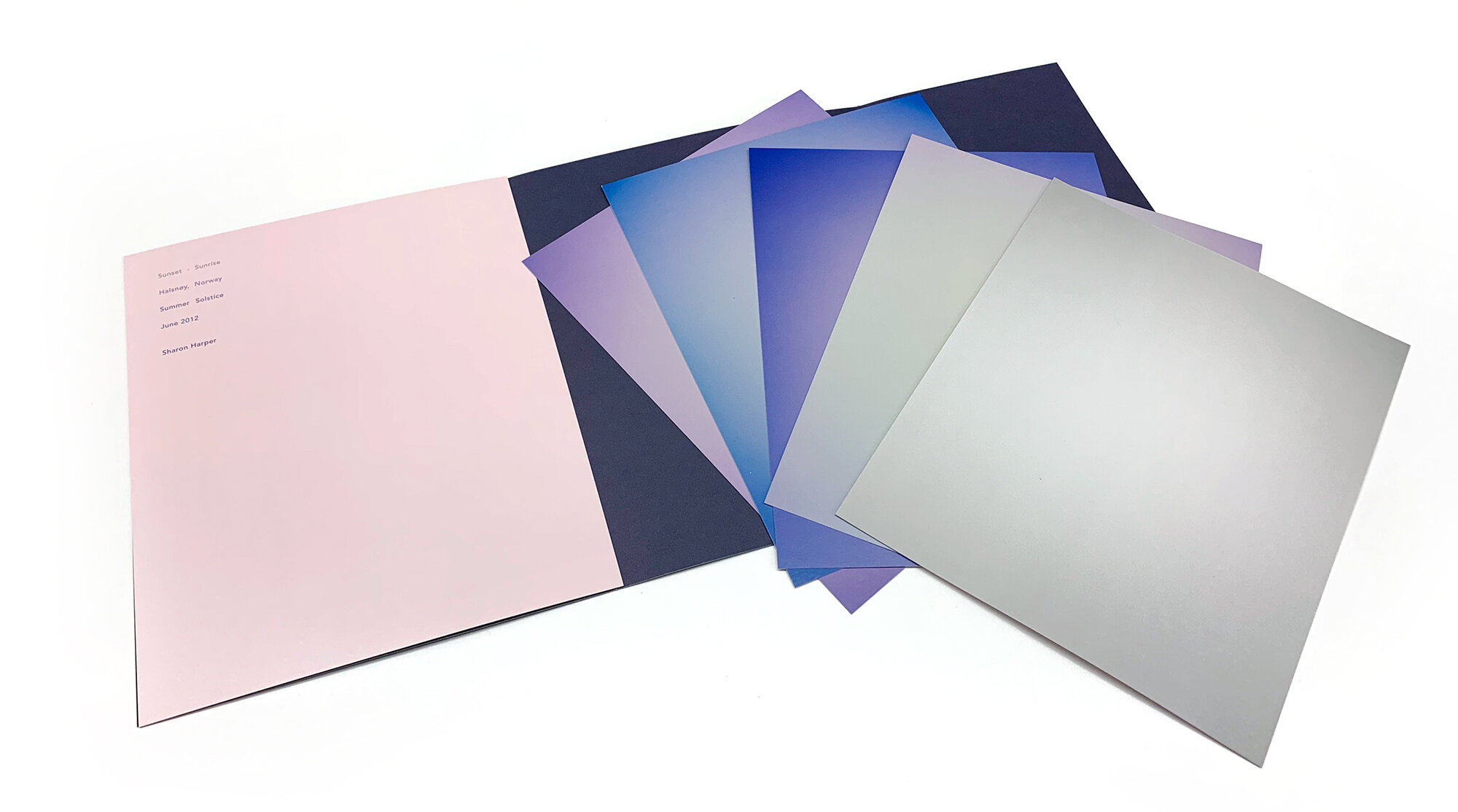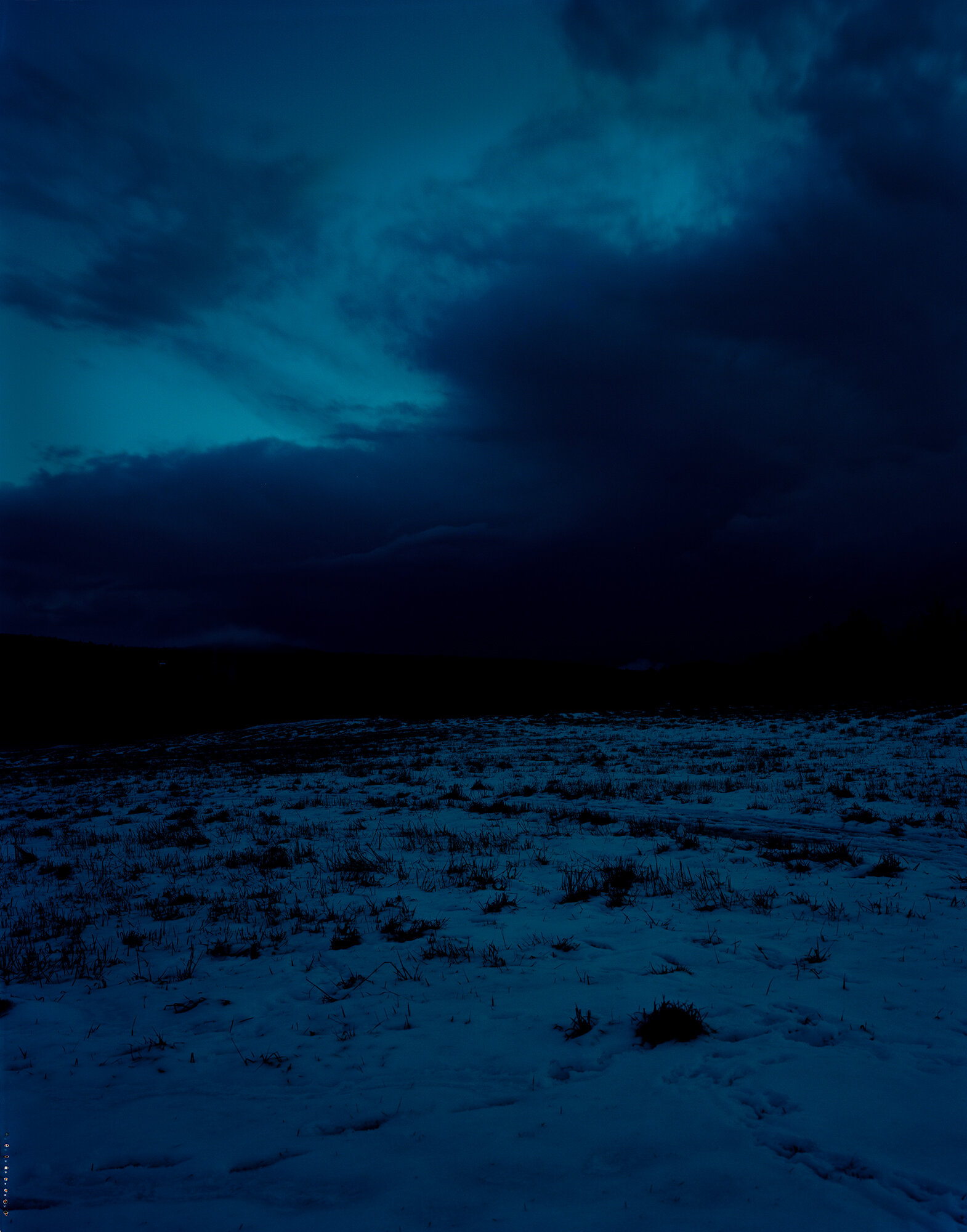EXHIBITION CALENDAR 2022
RETURNING LIGHT
Artist:
Sharon Harper
Exhibition Dates:
April 09 - June 25, 2021
Rivalry Projects is thrilled to announce our third exhibition featuring the photography of Sharon Harper. This exhibition, “Returning Light,” will showcase Harper’s Twelve Hours from Winter to Spring and Solstice series among others, focusing on the changing effect of light over space and time.
“Returning Light” is a reflection of our socio-economic climate at the close of a period of darkness following the global pandemic and a hopeful inflection point of vaccinations. Within a backdrop of the climate crisis, Harper’s work positions us relationally within the living environment. Her work emphasizes the transition of time, absorbed through the medium of photography and made discernible through light. It is this re-emergence of light - whether from the sun, dispersed through cloud cover, or delivered by stars - that Rivalry hopes will serve as an optimistic reminder of cycles and processes that are larger than us.
Harper’s Twelve Hours from Winter to Spring is a series of twenty-six images made on a flight from Fairbanks, Alaska to Boston, Massachusetts. The land below the airplane is transformed through technology and the perspective of high-speed air travel to allow time and seasonal cycles to become fluid. The journey from winter to spring begins under a pre-dawn full moon and ends twelve hours later with the ambiguous promise of springtime in Boston’s bleak April landscape. Rivalry’s hope is that these photographs remind viewers of the disappearance of environmental resources within our own borders, specifically glacial ice, and making it legible beyond an abstract concept.
Photographs from Harper’s Solstice series were taken in 2012 in Norway and Vermont documenting the summer solstice and winter solstice, respectively. Sunset–Sunrise (Halsnøy, Norway), June 2012 presents five photographs made on consecutive nights during the week of the summer solstice, a time known as White Nights in Norway. Made with 4×5 transparency film exposed through a pinhole camera, they are each the cumulative light from when the sun sets (approximately 11:15PM) until it rises (approximately 4:15AM). These photographs measure the night in terms of light rather than darkness. Sunset–Sunrise (Middlesex, Vermont), December 2012 are companion pieces to Sunset-Sunrise (Halsnøy, Norway), June 2012. The photographs are made at last light on the shortest day of the year.
Other work within the exhibit will explore nuances of light and shadow as cast across skies and canyons. Of her practice Harper says “These images are an attempt to record a realm we can hardly fathom, within a framework of time we can readily understand.” Harper’s work not only marks the passage of time on Earth, it is a meditation on hope, a return to environmental thinking, and a sense of awe in the heavens and in the Earth, and it addresses time as a cosmic entity to which we are inextricably linked.
“Returning Light” will be on view at Rivalry Projects from April 09 - June 25, 2021 spanning the period of our Spring Equinox and Summer Solstice, and a net gain of two hours of sunlight. Rivalry remains open by appointment only.
This work was created in a studio located on the traditional homelands of the Massachusett, Wampanoag, and Nipmuc people, and is being exhibited at Rivalry Projects on the traditional homelands of The Haudenosaunee Confederacy.
WORKS
EXHIBITION PUBLICATIONS
Sunset-Sunrise (Halsnøy, Norway), Summer Solstice, June 2012 portfolio
Rivalry Projects is proud to announce our first publication! Produced in partnership with Sharon Harper, the Sunset-Sunrise (Halsnøy, Norway), Summer Solstice, June 2012 portfolio is on sale now exclusively through Rivalry Projects.
The five photographs within the Sunset-Sunrise (Halsnøy, Norway) portfolio were made on consecutive nights during the week of the summer solstice, a time known as white nights in Norway. On each night, a pinhole camera loaded with a sheet of 4x5 transparency film was exposed to the sky from sunset to sunrise, gathering dusky light for the duration of the night. These photographs measure the night in terms of light rather than darkness.
A limited edition version of Harper’s Sunset-Sunrise (Halsnøy, Norway) portfolio is also available; each includes a signed archival inkjet print of Sharon Harper’s Sunset (Middlesex, Vermont), 2012. Limited Edition of 100.
Some Observations on Movements of the Earth, 2014-2021
A set of soft cover publications. 45 pages each digitally printed. Includes photographs + essay from Sharon Harper’s series Some Observations on Movements of the Earth, 2014-2021.
Some Observations on Movements of the Earth, 2014-2021- invites one to read movements of the earth. Implicit within the work is a call to shape our lives in dialogue with the dynamic changes of the living environment. The project records phenomena that form within a geological time-frame, as well as faster processes such as earthquakes, monsoons, landslides, forest fires and coastal erosion. Phenomena that shape the land often happen off stage. What one is left with to contemplate is its aftermath—carved canyons, strewn boulders, desert washes that leave tangled debris behind. Photographs within this series are grouped and titled according to the phenomena that shaped them, such as Rockfalls and River Canyons, and The Desert Wash. In the midst of climate change, this record asks that we consider living proactively in tune with the environment, respecting the risks it presents.
PROJECT SPACE
Rivalry Projects is pleased to announce a Project Space installation featuring nine photographs by Todd Hido. Several of these images appear in his signature monograph House Hunting. On view is Hido’s “Homes at Night” series, in which portraits of the exteriors of houses become stand-ins for their occupants and a cypher for the darkness of American life.
"House Hunting" is, on the one hand, a portrait of a certain America at that specific moment in history: this is an economically downtrodden place, dark and empty homes with the dirty laundry barely packed, or homes with the lights on but radiating no warmth. Simultaneously, this is a portrait of America — and specifically, suburban America — from any contemporary post-war decade: a raw look at white paint chipping off of picket fences.
Hido’s work has echoes of the ’70s adolescence he spent in his hometown of Kent, Ohio, a city scarred by the 1970 shooting of four college students by the Ohio Army National Guard during a Vietnam War protest. His unique landscapes—frequently devoid of active human figures, yet suffused with energy—resonate because they feel as though they have been directly pulled from the recesses of your own memory.
‘I take photographs of houses at night because I wonder about the families inside them,’ Hido tells me. ‘I wonder about how people live, and the act of taking that photograph is a meditation.’ House Hunting, therefore, is more question than answer. A rumination without resolution.
It would seem that in order for these pictures to exist, the photographer would need to be a voyeur, but Hido denies secrecy. He says he keeps himself obvious, even when shooting in the dark. When somebody calls the police, he is quick to make the distinction between photographer and criminal. ‘You’re allowed to take pictures in public,’ Hido says. ‘It’s interesting that so many people regard their surroundings as inherently private. Hido heightens that sense of false privacy. Amplifies it, to show the cracks in the edifices.
Todd Hido is a San Francisco Bay Area-based artist whose work has been featured in Artforum, The New York Times Magazine, Eyemazing, Wired, Elephant, FOAM, and Vanity Fair. His photographs are in the permanent collections of the Getty, the Whitney Museum of Art, the Guggenheim Museum, New York, San Francisco Museum of Modern Art, the de Young Museum, the Smithsonian, the Los Angeles County Museum of Art, as well as in many other public and private collections. Most notably, Pier 24 Photography holds the archive of all his published works.
Hido’s photographs of suburban landscapes are taken during solitary, long drives. The main subject of his work is the quality of natural and artificial light in the American landscape, as in reflected sunrays or the illumination of a television pouring from an anonymous window. Hido takes his pictures in a “fairly undirected way”, he says, but edits his negatives together and manipulates them until he produces an image that represents his encounter with a place. In describing his process, Hido said, “I shoot sort of like a documentarian, but I print like a painter.”

















































